Abstract
High-performance liquid chromatography with a cation-exchange resin-packed column was used to determine fermentation products of several known and unknown Clostridium species. The column was operated at 30°C, and isocratic elution was done with 0.013 N H2SO4. Sample preparation for high-performance liquid chromatographic analysis required only membrane filtration. Glucose and formate were readily determined. Quantitative results were easily obtained. Chromatograms of eight unknown strains could be matched with chromatograms of at least one of the type culture strain chromatograms. In some cases, additional testing was necessary before identification could be made. The same conclusions were reached by parallel testing with gas chromatography to determine fermentation products. High-performance liquid chromatography is simple to apply and, under some conditions, is faster than gas chromatography for fermentation product analysis.
Full text
PDF
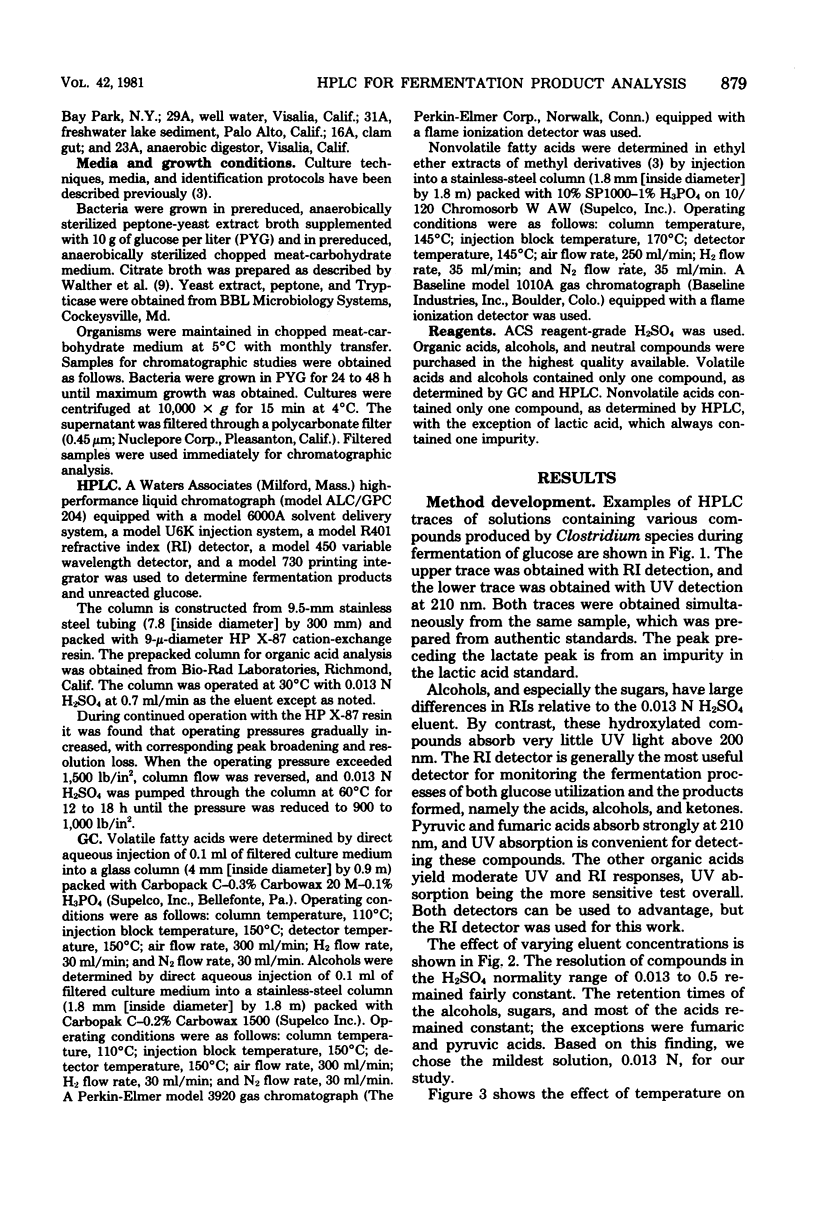
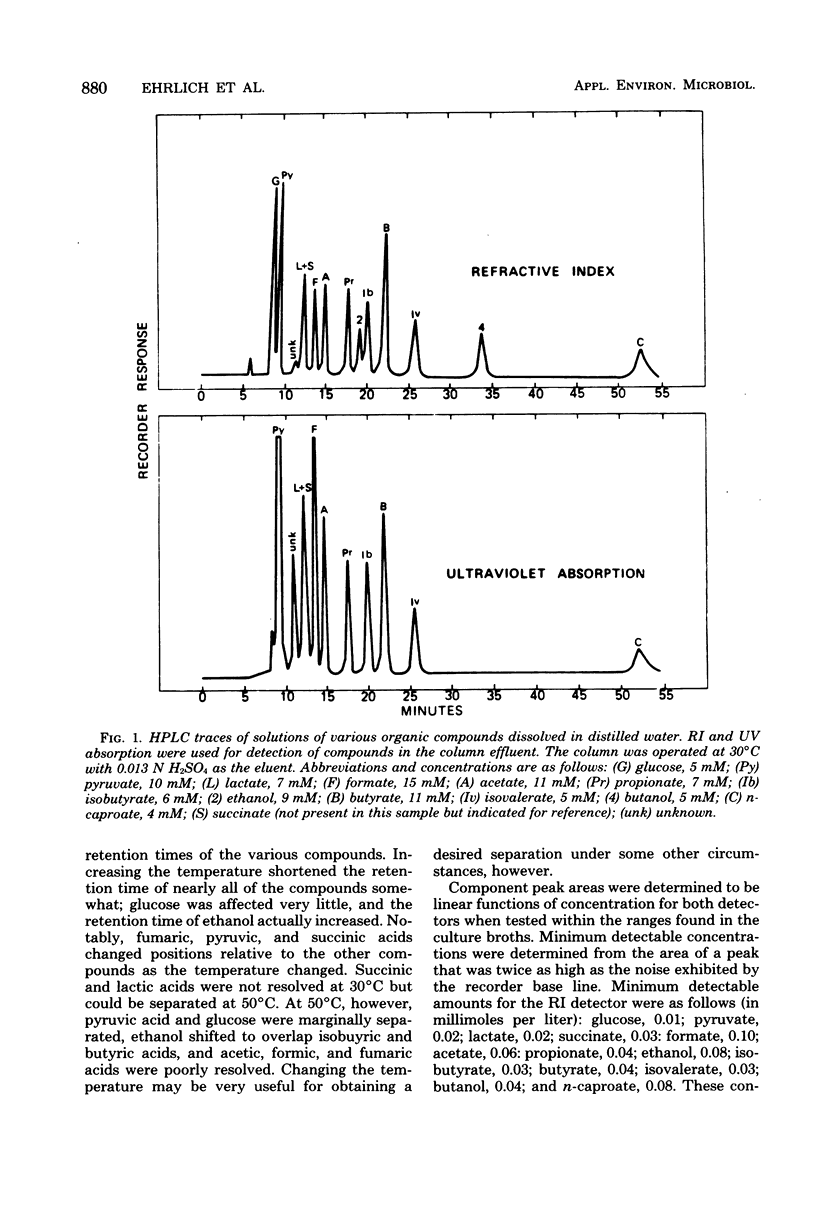
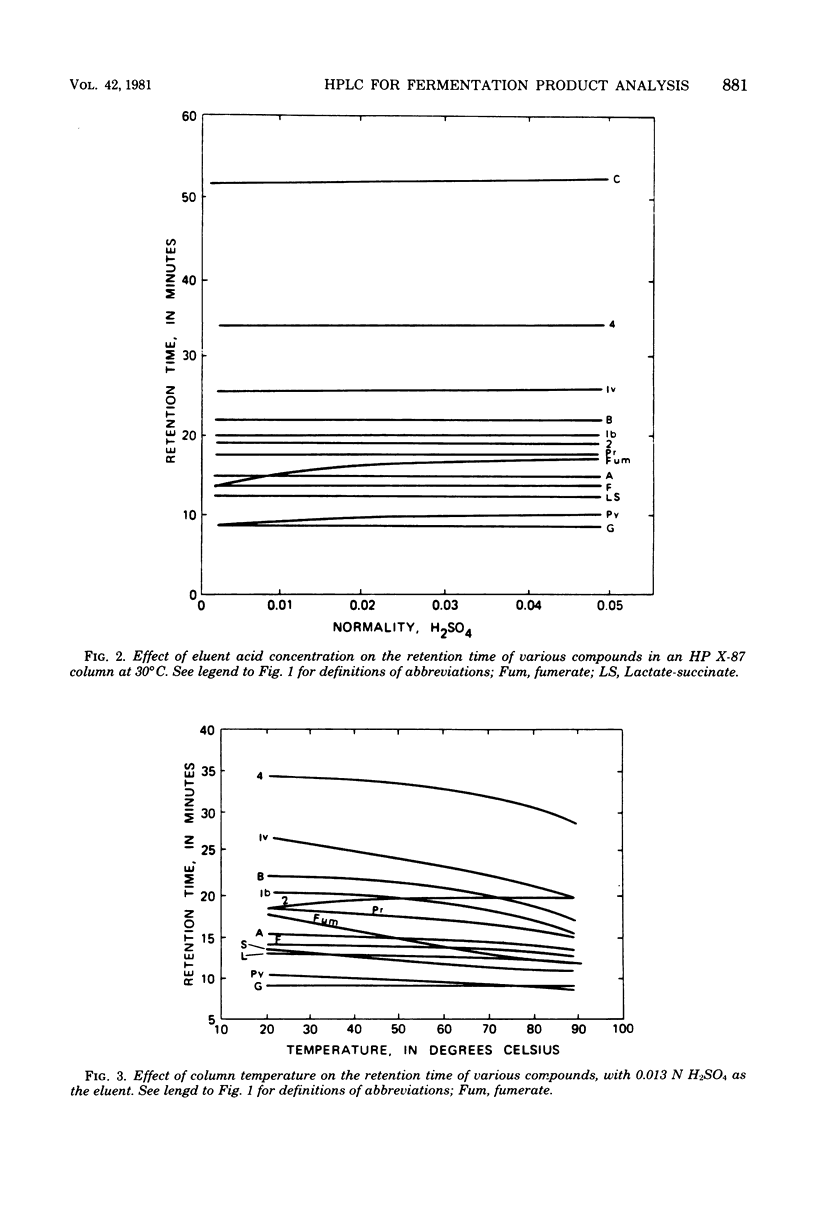
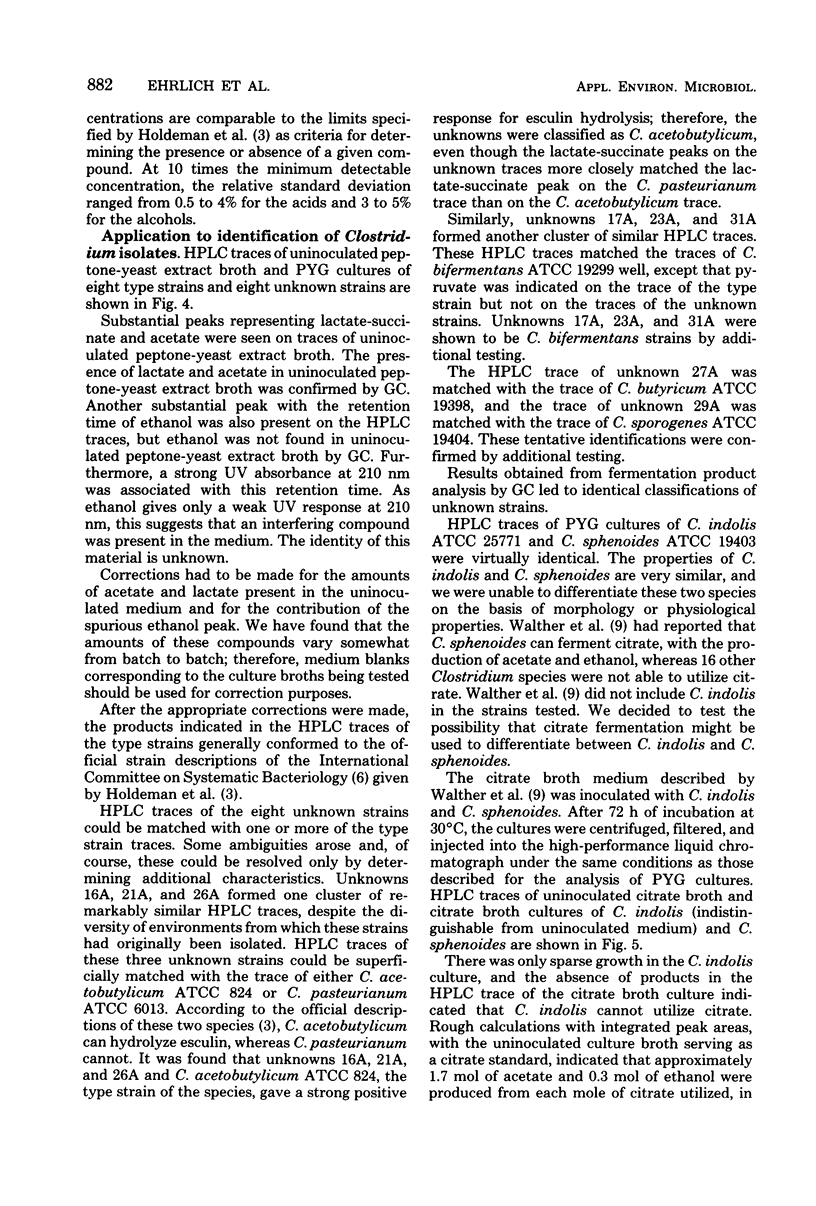
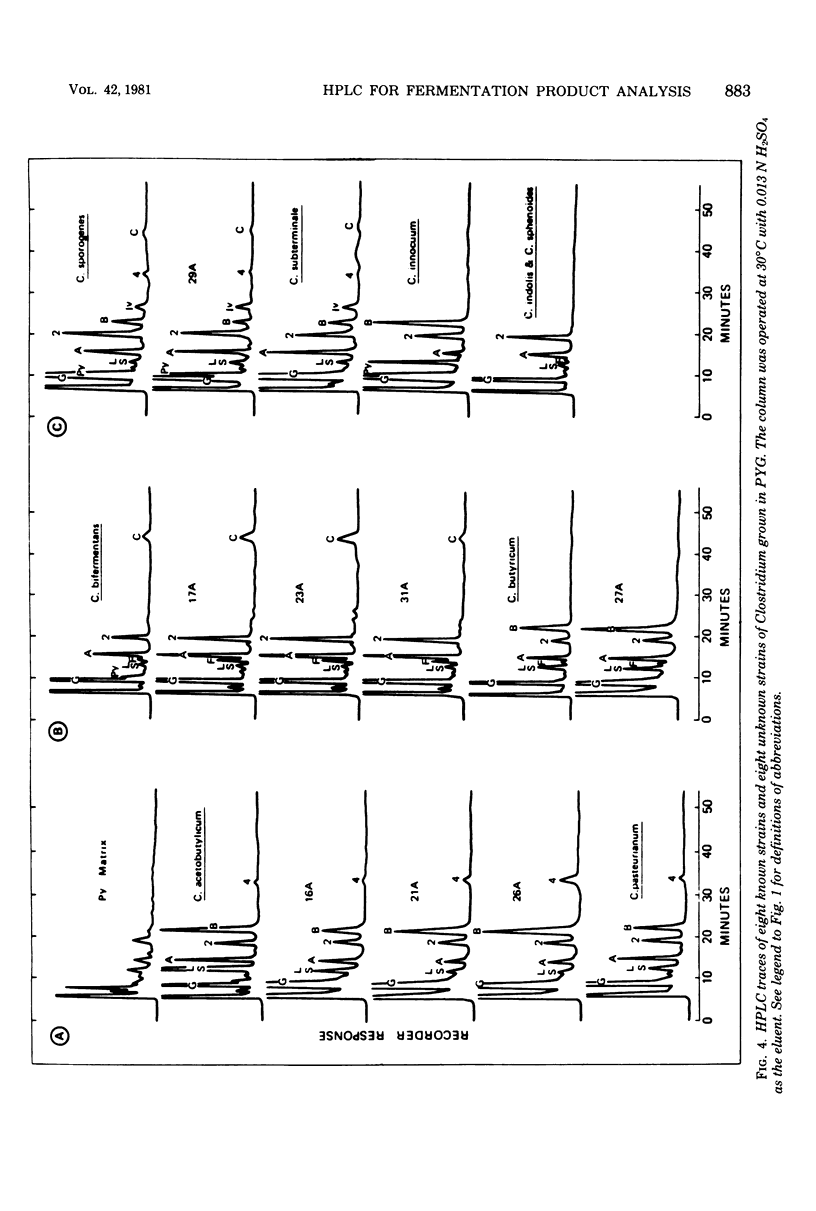

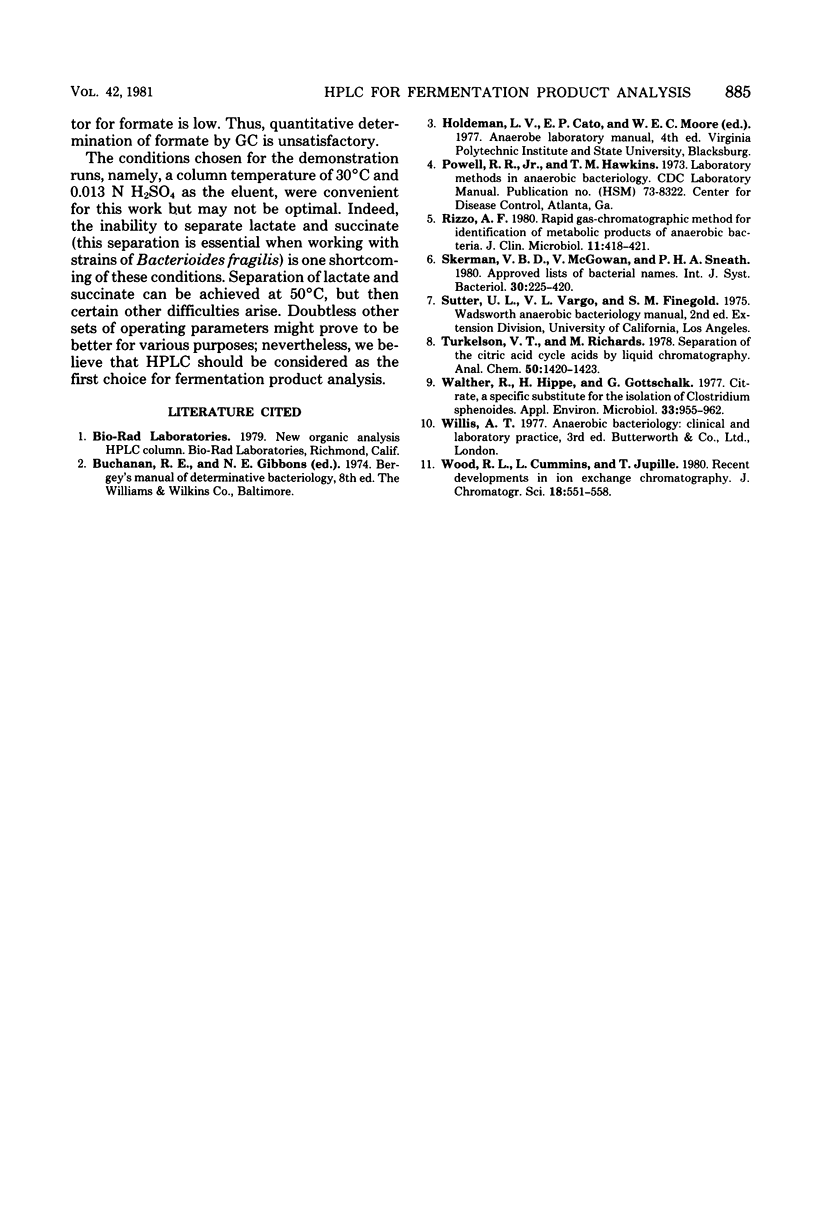
Selected References
These references are in PubMed. This may not be the complete list of references from this article.
- Rizzo A. F. Rapid gas-chromatographic method for identification of metabolic products of anaerobic bacteria. J Clin Microbiol. 1980 Apr;11(4):418–421. doi: 10.1128/jcm.11.4.418-421.1980. [DOI] [PMC free article] [PubMed] [Google Scholar]
- Walther R., Hippe H., Gottschalk G. Citrate, a specific substrate for the isolation of Clostridium sphenoides. Appl Environ Microbiol. 1977 Apr;33(4):955–962. doi: 10.1128/aem.33.4.955-962.1977. [DOI] [PMC free article] [PubMed] [Google Scholar]


